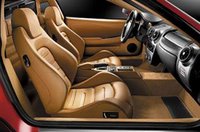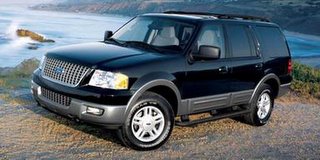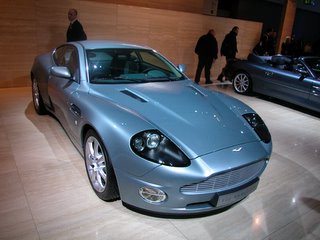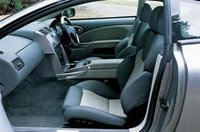Car Gazing #003: Ferrari F430
(-) the three-year wait to get one, even if you can afford it
ON THE ROAD
Performance
The F430’s new 4.3-litre V8 delivers 483bhp and 343lb ft of pulling strength via a six-speed gearbox with either a conventional floor shift or paddles behind the steering wheel. It pulls effortlessly from 2000rpm, but it’s so fast from 4000rpm to the rev limiter at 8500rpm that it seems as if the world has suddenly speeded up.
Ride and Handling
This is the first road car with Grand Prix traction aids, notably an electronic differential to inhibit wheelspin. You can adjust how much help it gives, as well as the degree of anti-skid control and suspension firmness, with a switch on the steering wheel. Its grip defies logic, while ride comfort is good.
Refinement
Part of the appeal of a Ferrari is the noise it makes. When cruising, the F430 is quite subdued apart from some wind noise from around the mirrors. However, squeeze the accelerator and the engine growls, wails and screams, giving an audible reference to your rate of progress. The paddle-shift gearbox is the smoothest yet.
OWNERSHIP
Buying and Owning
Anyone who can afford an F430 won’t bat an eyelid at the high running costs. The painful bit is the two-to-three-year wait to take delivery if your name isn’t already on the order list. Resale values are hugely dependent upon mileage, which is why many Ferraris aren’t used as often as is good for them.
Quality & Reliability
One of the great improvements at Ferrari in recent years is the quality of cars leaving the factory. The paintwork is superb and the fit and finish is close to the standards of German sports cars. The mechanical bits, especially, are a work of art and they should prove unbreakable as long as they are maintained properly.
Safety & Security
Ferrari claims the F430’s structure is so strong that there’s no need to fit side airbags. The electronic safety aids do their job brilliantly so that even 483bhp and a greasy road is not a daunting combination. Deadlocks aren’t fitted but in the UK Ferrari adds a tracking device to help the police locate stolen cars.
IN THE CABIN
Behind the Wheel
These days, you can tailor a Ferrari cabin any way you want. You sit well towards the centre in a snug seat but everything is adjustable and the view out is good for a low, wide, mid-engined car. If the electric window switches were on the doors rather than the dash, it would be close to ideal.
Space & Practicality

The F430 is a mid-engined two-seater but within the restrictions this configuration imposes, it does a good job. The central tunnel is slim to give good shoulder room, even though the seats are mounted well away from the doors. The front boot is quite small but there’s space for more luggage inside the cabin.
Equipment
The basic specification includes leather trim and electronic safety aids but you can personalise the car any way you want. Racing seats and belts, carbon or aluminium dash trim, a red or yellow rev counter and paddle-shift gearchanging are just some options.
source: www.whatcar.com



